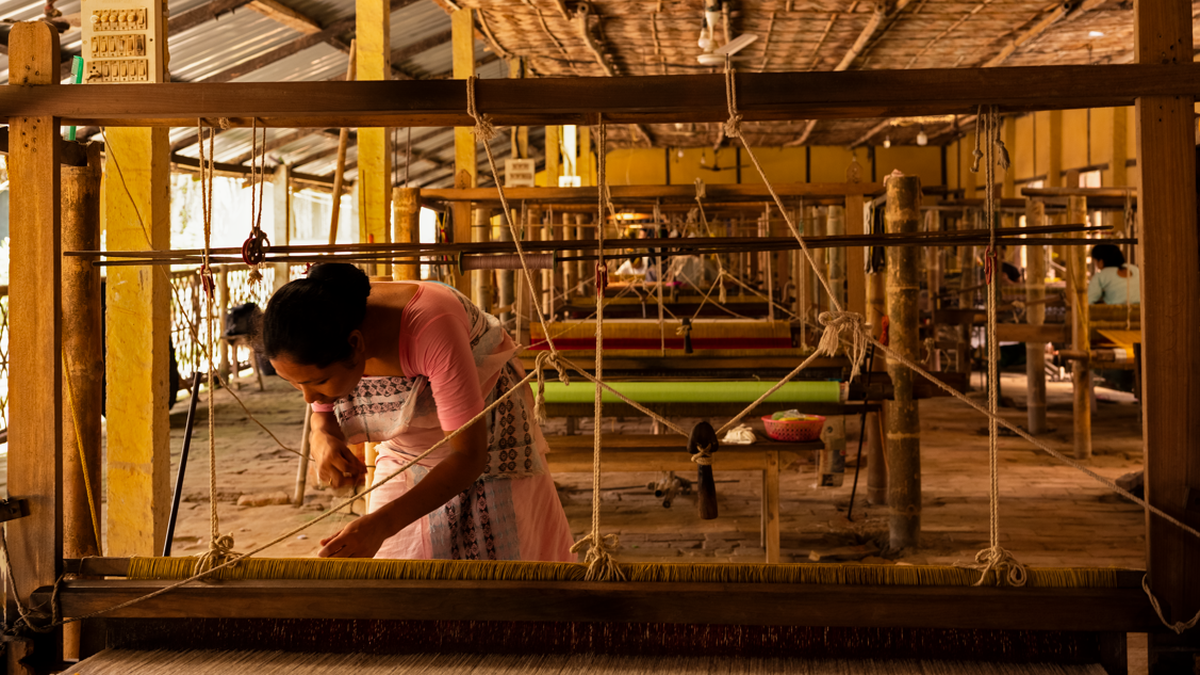
It is a warm day in the Chirang district of Bongaigaon, a two-hour drive from Guwahati, Assam. We are at the handloom section at the ANT (Action North East) campus. Since last year, Royal Enfield has been collaborating with the NGO — which works for women’s empowerment and to create voluntary action in the Northeast of India — on ‘The Himalayan Knot’, to create designer apparel.
The motorcycle giant’s initiative is an endeavour to create meaningful fashion, focused on textiles from the Himalayan Belt. Each edition, they will collaborate with prominent fashion designers who are expected to engage meaningfully with the entire value chain of creating a heritage textile piece over six to eight months. For the second edition, focused on capsule lines with eri silk from Assam and Meghalaya and Bodo weaves, it was silk worm rearers, spinners, dyers, weavers, and tailors.
Spinning eri silk
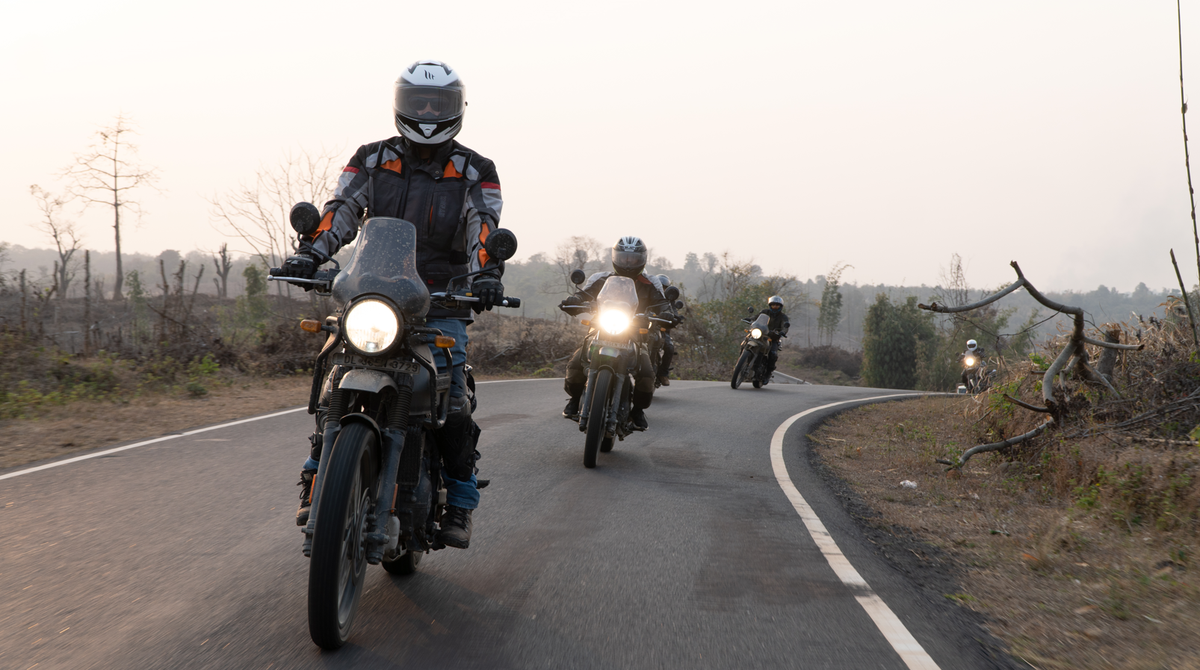
At ANT, I’m on a special mission — to see the tiny silkworms (called era in Assamese) in person. All eri silk is miscredited as ahimsa (non-violent), but the tribespeople and Northeastern textile experts are quick to explain that it comes down to ethical practice. An honourable process takes around 50 days, one of the longest harvest cycles of any silk, making eri perhaps the most expensive. In the Northeast, conscious practice can also mean nose-to-tail eating — in this case, using the silk worms as a source of edible protein in Garo cuisine once it has finished spinning the cocoon. But as eri silk rearing is an important source of employment, many unchecked rearers raise the worms for the sole purpose of sale, encouraging increased mating cycles, which is contrary to the non-violence rules.
Along for the ride
Mandeep ‘Mandy’ Merwah peers at a cotton patch that is being handwoven by a Bodo weaver, guided by Smitha Murthy, a design mentor at ANT. “The tiny bike motifs really speak to the rider in me,” says the 52-year-old independent behaviour change trainer. Merwah is one of eight rider-researchers with us journalists on an immersive and exploratory trip organised by Royal Enfield.
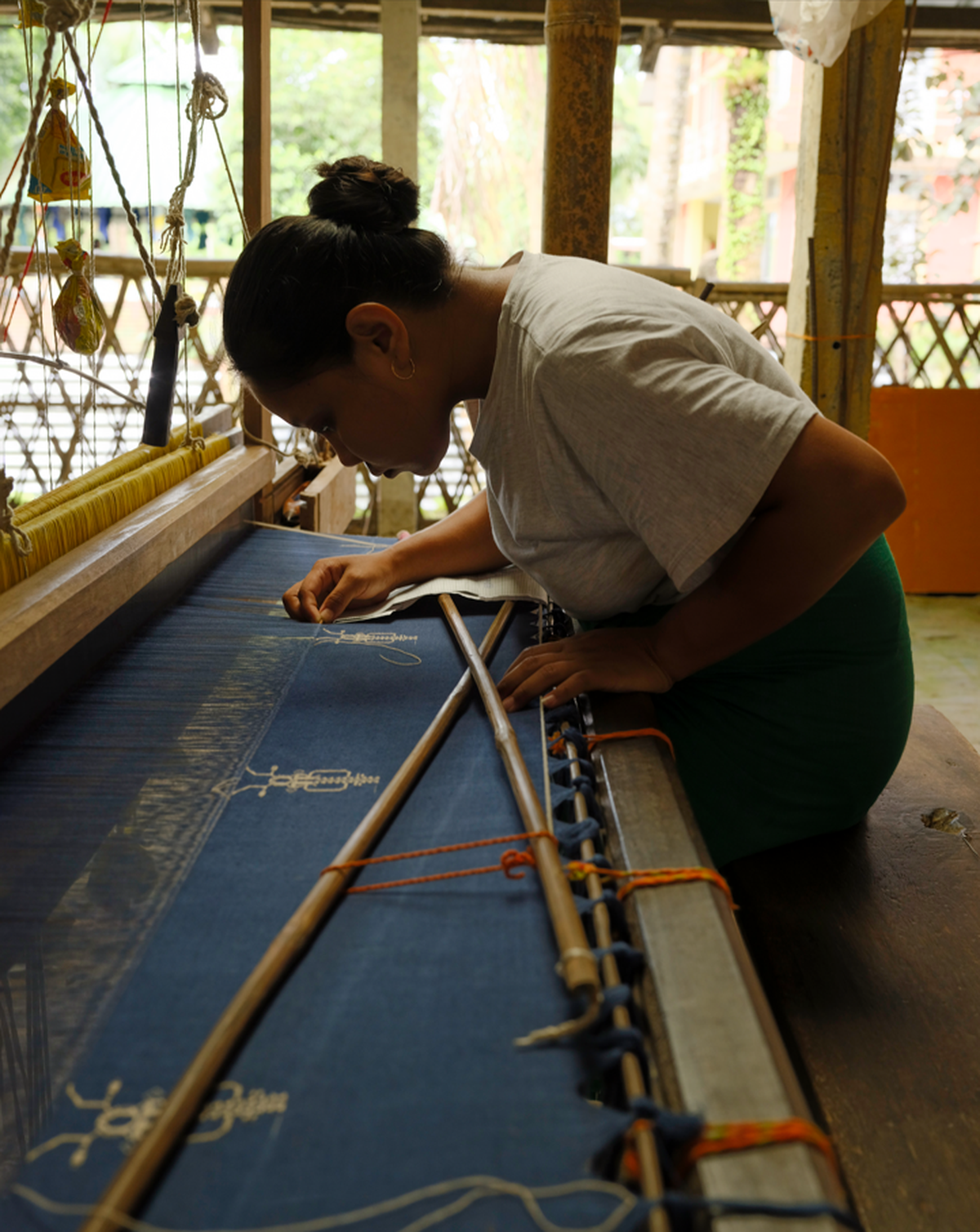
Weavers at work
The focus for them is to collect metadata for UNESCO, as part of the company’s ‘Social Mission’ — discovering (charting new routes for travellers), documenting (via videos, interviews, written text) and promoting the Intangible Cultural Heritage (ICH) of India.
“For riders, long bike trips are usually about the road, the freedom, and [bonding with] friends. But spending so much time with the tribes and, in a way, being a record of their oral history is incredibly special,” Mandy says. While I focus on Bodo weaving techniques, the rider-researchers will interact with the Garo tribe in Meghalaya, its chefs who are keeping their cuisines authentic, take part in chubitchi-making (Meghalaya’s famous rice beer), and connect with the custodians of the sacred Wangala dance.
Bodo weavers x Enfield
Sushant Abrol, of up and coming Delhi-based menswear label Countrymade by Sushant Abrol, is one among three designers participating in the second edition. An avid rider himself, he says, “Owning an Enfield bike within two years of my design career, and now this collection is a testament to the power of manifestation.” His collection consists of six jackets and shirts, aptly titled ‘Country Road’. Made with cotton yarn in a Bodo weave, it includes a black shirt inspired by tyre tracks (₹3,400), and a blue half-sleeve number featuring Enfield’s famous ‘350’ bike (₹2,950).
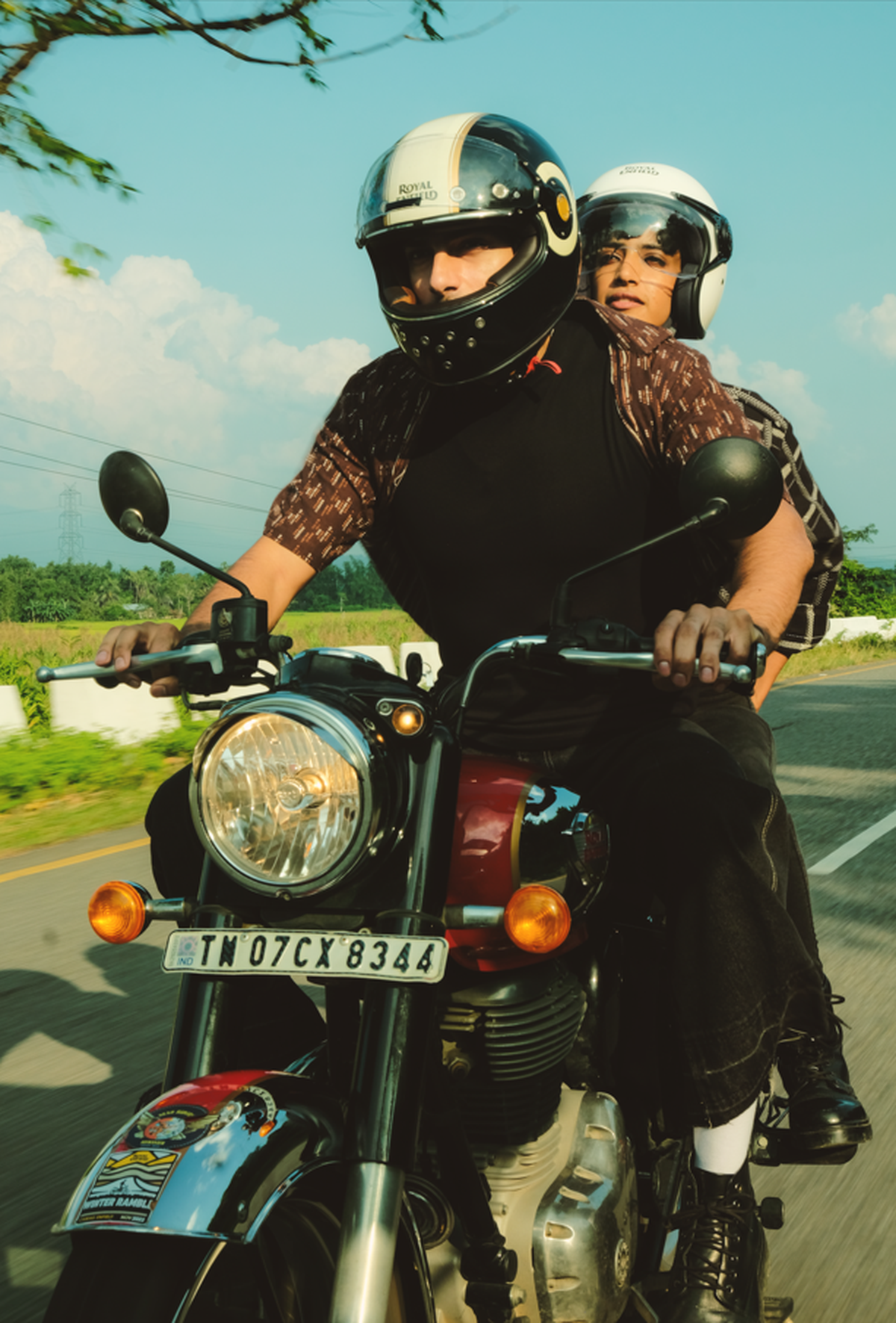
Designs from the Country Road collection
Meanwhile, senior designer Sonam Dubal, known for his fantastical jackets and decades-long work with eri silk has designed the ‘Homecoming’ capsule collection, and Rina Singh of Eka has created ‘Go North’ with Ladakhi pashmina for her edit.
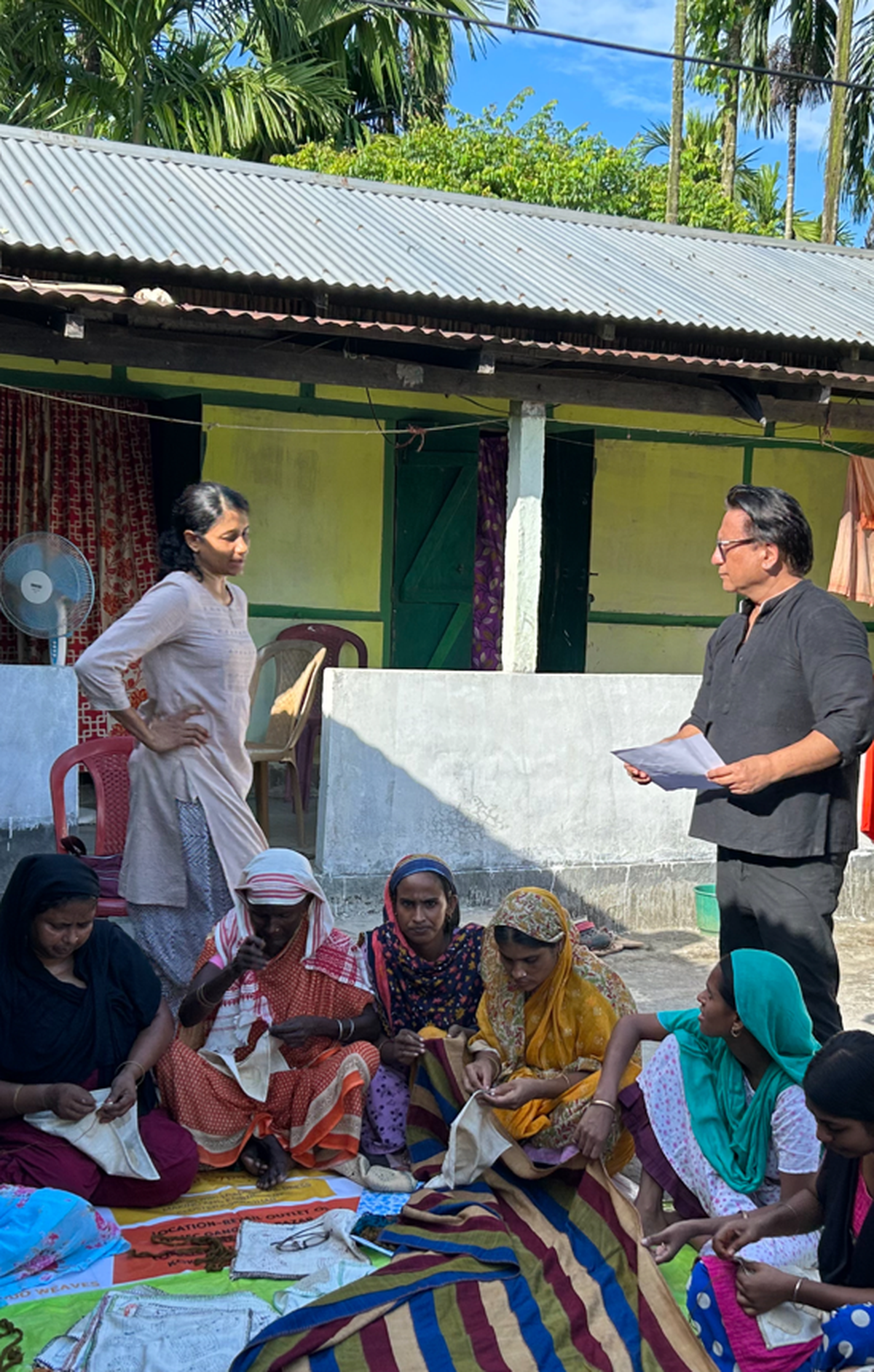
Sonam Dubal with ANT’s weavers
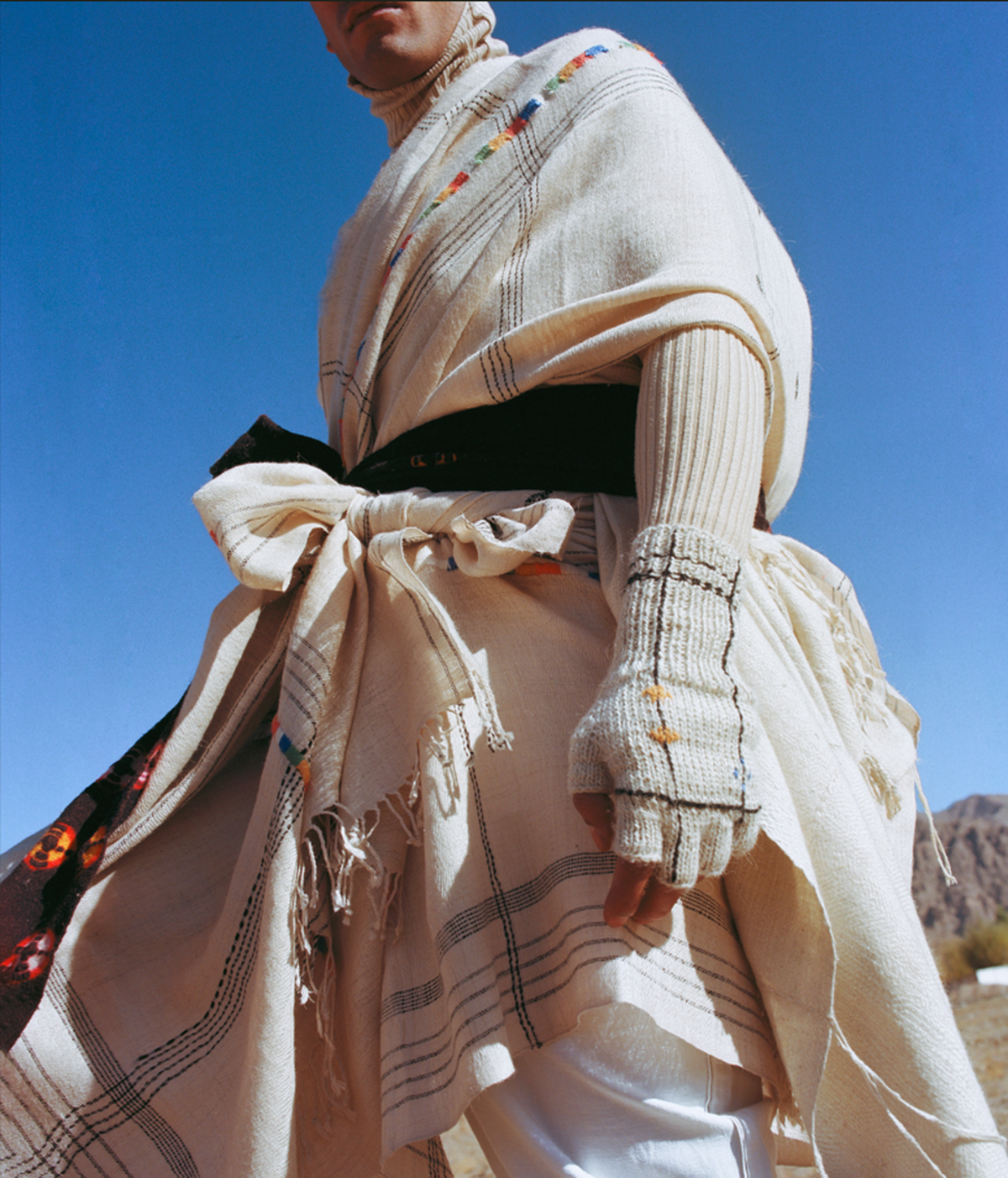
Eka’s Korzok shawl
Over two editions, and 17 curated rides, 105 rider-researchers (motorcycling enthusiasts enlisted by Enfield to interact with local communities, and participate in the documentation of waning cultures) have helped the motorcycle manufacturers document 66 regional practices across Assam, Arunachal Pradesh, Meghalaya, Mizoram, Nagaland, North Bengal, Sikkim and Tripura. The rider-researchers from backgrounds such as finance, art and design, are picked after a stringent selection process, involving video interviews and group discussions to check interest, sensitivity and zeal for the voluntary experience.
The silkworm cycle
A short ride from the ANT campus, we find ourselves in the centre of a village home. Under a cloth encasement, thousands of eri silkworms chow down on castor plants. The worms feed for 21 days, and on reaching maturation, spin their cocoon. The sheathe is spun with both sides open, making it easier for the worm to escape, and the silk can be classified as ahimsa or vegan silk — a preferred choice of textile for vegans, monks, and the Buddhist communities.
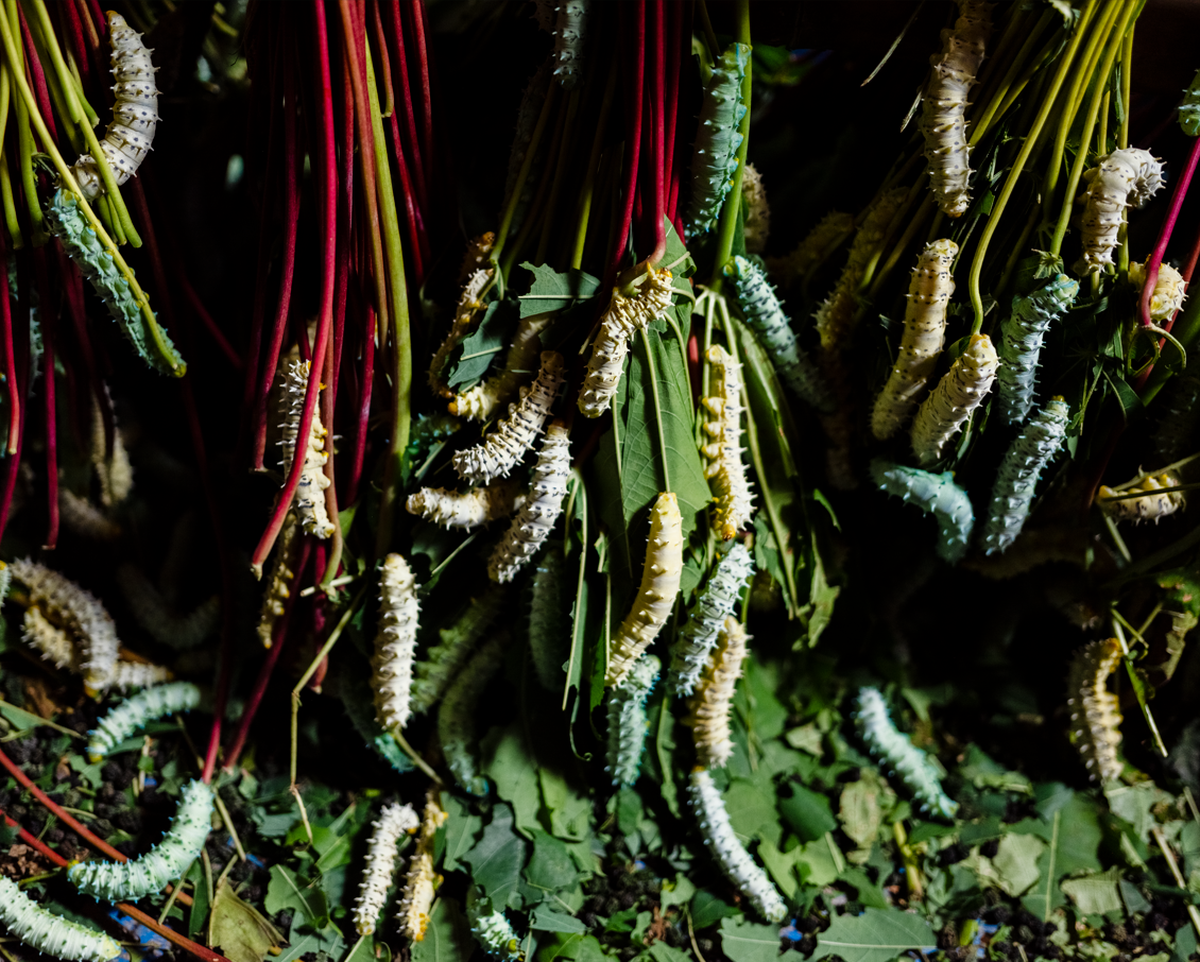
Era silkworms
“I am a Sikkimese Buddhist. Being one with nature is in our blood,” says Dubal, who was born in Assam and credits his upbringing in an inherently conscious environment for his design ethos. Favouring Asian cuts and a zero-waste ideology, he has showcased his eri silk explorations in both India and abroad for over 25 years. His ‘Jajabor’ jacket (₹8,000), in the ‘Homecoming’ collection, includes an illustrated Assam map lined with rhinoceros. The ‘Black and White Crossing’ shirt (₹4,000) incorporates the ANT campus coordinates as woven design elements on the sleeve.
“It is not just about creating collections. The Himalayan Knot is a collaborative effort to bring together the Himalayan communities, conservation specialists, craftspeople, and designers to conserve pastoral land and safeguard the living heritage for future generations,” says Bidisha Dey, executive director of Eicher Group Foundation. The project’s final vision is to partner with 100 communities. The group is looking to highlight clusters in Kashmir, Himachal Pradesh and Uttarakhand next.
The Himalayan Knot collections are exclusively available on store.royalenfield.com.
The writer is a Mumbai-based fashion stylist.





